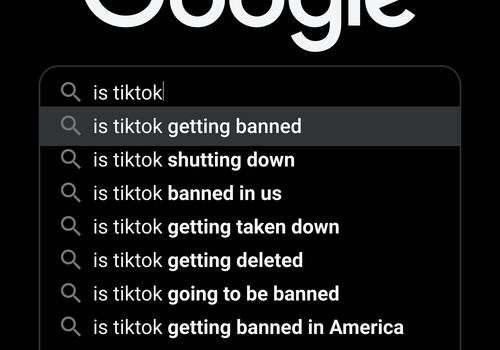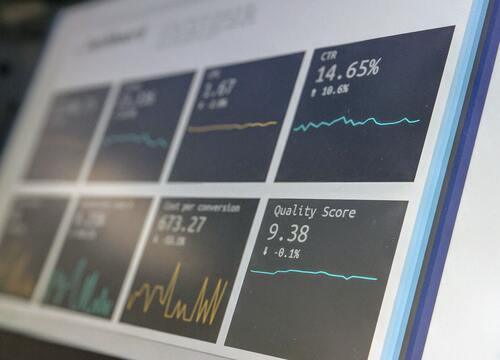Sehen und gesehen werden: Suchmaschinenoptimierung / SEO
Der schönste Internet-Auftritt nützt nichts, wenn die Seite nicht gefunden wird. Wir wissen, welche Weichen bei der Suchmaschinenoptimierung gestellt werden müssen, um Sichtbarkeit und Reichweite zu bekommen.

-
-
Top Prio für SEO
Suchmaschinen-Ergebnisse (SERPS)
Ein alter SEO Witz lautet: Welches ist der beste Ort, um eine Leiche zu verstecken? Antwort: Die Seite zwei bei den Google-Suchergebnissen. Tatsächlich werden höchstens die ersten zehn organischen Suchergebnisse angeklickt. Mehr werden auf Seite eins der der SERPs (Search Engine Results) genannten Suchergebnisse sowieso nicht angezeigt.
Organische Suchergebnisse
Organische Suchergebnisse kann man nicht kaufen. Dafür ist Suchmaschinenoptimierung da.
Es geht auch nicht darum, Geld zu sparen. Bezahlte Werbung ist letztendlich oft günstiger als per Optimierung erzielte Ergebnisse. Jedoch werden die organischen Suchergebnisse von den Usern höher bewertet als schnöde Anzeigenwerbung. Zu Recht.
Wenn kein SEO betrieben wird
Ein Worst-Case-Szenario: Eine Unternehmens-Website ist ein Jahr online, aber nichts tut sich. Die Seite hat viel zu wenige Besucher und die Verkäufe im Onlineshop laufen schleppend. Dabei hat die Seite ein tolles Design und die Ware wird adäquat präsentiert. Leider bleiben viele gut gemachte Webseiten unentdeckt, weil keine Suchmaschinen-
optimierung betrieben wird
Eine Frage der Kompetenz
Der Grund hierfür liegt fast immer darin, dass viele Werbeagenturen zwar grafisch einen guten Job machen, jedoch in Sachen Suchmaschinenoptimierung nicht über die notwendige Kompetenz verfügen.
SEO ist etwas für Profis
SEO ist etwas für Profis
Spätestens hier kommt ein SEO-Experte ins Spiel, der sowohl für Sichtbarkeit, Reichweite und natürlich auch für ein gutes Ranking bei den Suchergebnissen bei Google sorgt .
Unsere SEO Expertise
repalogic hat als SEO Agentur Jahrzehnte an Erfahrung und weiß, an welchen Stellschrauben gedreht werden muss, um eine Website auf die Erfolgsspur zu bringen.

Erfahren Sie mehr über unsere Leistungen und vereinbaren Sie einen Termin für eine kostenfreie Beratung unter +49 (0)7575 7180 951
Suchmaschinenoptimierung Step by Step
Erste SEO-Maßnahmen
Analyse der aktuellen SEO-Maßnahmen (sofern vorhanden). Was funktioniert, was nicht?
SEO-Strategie
Prioritäten klären, kurz-/mittel-/langfristige Ziele setzen
Keyword-Recherche und User-Intention
Das Fundament der Suchmaschinenoptimierung
Content-Optimierung
Bestehende Inhalte werden bewertet, künftige Content-Strategie-Planung
Linkbuilding
Vertrauen in die eigene Marke und Expertenstatus erreichen
Monitoring, KPI und Reporting
Überprüfung und Messung der SEO-Maßnahmen
Erste SEO-Maßnahmen
Zunächst ist eine Analyse des SEO Status Quo sinnvoll. Wo steht die Seite, erscheint sie bei Google, wie ranken meine Keywords und wie lauten diese? Sind die Inhalte gut und werden sie gelesen? Wurde das Thema responsives Design bereits berücksichtigt? Je besser die Ergebnisse der Analyse, desto weniger aufwändig werden die zu treffenden Maßnahmen sein. Leider ergibt diese Analyse oft erschreckende Erkenntnisse.
Ergo gilt es, einen umfangreichen Aufgabenkatalog abzuarbeiten:
- Ständige Erreichbarkeit einer Website muss gewährleistet sein
- Optimierung der Snippets, sprich Seitentitel und Seitenbeschreibung
- Für schnelle Ladezeit der Seite sorgen
- Optimierung der Qualität der Inhalte
- Keyword-Recherche und Analyse
- Optimierung des responsiven Designs
- Linkaufbau
- Reparatur von broken Links
- Optimierung Informationsarchitektur (interne Links)
- Für die Sichtbarkeit störende Inhalte entfernen
- Eventuelle doppelte Inhalte beseitigen (duplicate Content).
Das sind alles Dinge, die funktionieren müssen, bevor eine echte SEO-Strategie definiert werden kann. Allerdings sollte auch gesagt sein, dass diese Maßnahmen, sofern man sie regelmäßig überprüft, bereits für eine deutlich verbesserte Performance einer Website ausreichen. Das gilt insbesondere für kleinere Unternehmen und Online-Shops. Wenn man jedoch ein mittelständisches Unternehmen mit entsprechenden Umsätzen hat und Mitbewerber am Markt sind, ist eine umfangreichere SEO-Strategie sinnvoll.

SEO-Strategie
Eine ambitionierte SEO-Strategie ist ein komplexes Konstrukt, deren Maßnahmen zeitlich definiert werden müssen: kurzfristige Ziele, mittelfristige Ziele und langfristige Ziele.
Kurzfristig und teilweise mittelfristig soll das erreicht werden, was im vorangehenden Abschnitt beschrieben ist. Mittel- und langfristige Maßnahmen sollen dazu führen, dass eine Website das digitale Abbild einer Marke ist und diese zu einer Autorität in dem jeweiligen Geschäftsfeld oder Themenbereich wird.
Ein plausibles Beispiel ist Tesla: hier geht es um technisch fortschrittliche Pkw in der Oberklasse, was sich in Image der Marke, der Formensprache der Modelle und der Kommunikation des Unternehmens widerspiegelt. Tesla hat es geschafft, innerhalb weniger Jahre sämtliche Konkurrenten hinter sich zu lassen: eine kluge Modellpolitik, modernste Technik, Fahrzeuge, deren Bedienung stark an ein Smartphone erinnern. Das passt perfekt zum Online Auftritt der Marke und es entsteht ein homogenes Bild.
Wer bei Google & Co. einen Expertenstatus am Markt erreichen möchte, sollte konsequent daran arbeiten, im Bereich Domain-Optimierung Erfolge zu erzielen. Das hängt mit künstlicher Intelligenz zusammen, die bei Google schon weit gediehen ist.
So erkennt Google zum Beispiel:
- Stellt sich eine Marke erfolgreich als Entität dar und ist deren Webseite ein Abbild dieser Entität?
- Gelingt es der Marke, sich kontextuell in bestimmte Themenbereiche einzuordnen?
- Existieren semantische Themenwelten?
- Können die Inhalte einer Seite einem bestimmten Thema eindeutig zugeordnet werden?
Um solches zu erreichen, sind folgende Maßnahmen notwendig:
- Keywords und Themen für den Content müssen achtsam gewählt werden
- Die Suchintention für die jeweiligen Suchbegriffe muss in das semantische Umfeld passen
- Begriffe und Themen müssen sorgfältig recherchiert und semantisch analysiert werden (Mappings)
- Offline-Marketing muss zur Semantik passen, idealerweise ist eine starke offline bereits eine Autorität zu einem bestimmten Thema
Empfängt Google all diese Signale, wird diese Marke auch langfristig entsprechend eingeordnet und erreicht in einem bestimmten Themenfeld auch die entsprechende Sichtbarkeit.

Keyword-Recherche und User-Intention
Keyword ist der wohl am häufigsten genannte Begriff im SEO-Umfeld und das nicht ohne Grund. Denn Keyword steht für Suchbegriff. Keywords werden in Short-Tail und Long-Tail unterschieden, wobei es nicht unbedingt auf die Länge des Keywords ankommt, sondern vielmehr, wie spezifisch die Suchanfrage ist. So sind Long-Tail Keywords spezifischer und enthalten meist ein Verb wie „herunterladen“ oder „zum selbst machen“. Die Ergebnisliste ist hier kürzer, die Wahrscheinlichkeit einer Conversion höher.
Die Keyword-Recherche ist nichts anderes als eine Liste der Worte zusammen zu stellen, mit denen der User ein Produkt, eine Dienstleistung, eine Information oder einen bestimmten Ort sucht. Zur Keyword-Recherche gibt es einige sehr nützliche Tools, die helfen, mögliche Begriffe zu finden. Auch eine Wettbewerber-Analyse ist sinnvoll: ein erfolgreiches E-Commerce Unternehmen verdankt nicht selten einem gut gewählten Keywordset seinen Erfolg.
Immer wichtiger im Bereich Keywords ist die Suchintention des Users. Dank künstlicher Intelligenz ist Google immer mehr in der Lage, Ergebnisse zu liefern, die ziemlich genau das abbilden, was der User speziell sucht.
Es gibt folgende Kategorien zum Thema Suchintention:
- informationale Suchintention: der Nutzer sucht Informationen zu einem bestimmten Thema
- transaktionale Suchintention: der User hat Handlungsabsichten, oft sucht er ein konkretes Produkt, welches er erwerben möchte
- navigationale Suchintention: der User sucht eine ihm bekannte Website oder die Webseite einer ihm bekannten Marke
- lokale Suchintention: es werden Angebot aus dem lokalen Umfeld gesucht, wie z.B. Restaurants
- News Suchintention: der User sucht Neuigkeiten zu einem Thema oder Nachrichten
Eine gute Keyword-Recherche erfordert Kreativität und Erfahrung. Auch erleichtern professionelle Tools und die Erstellung eines Käuferprofils (Buyer Persona) und ergo die Definition der Zielgruppe eine wichtige Rolle.

Content-Optimierung
Das zentrale Thema im Bereich der Suchmaschinenoptimierung ist zweifellos der Content Bereich. Denn hier läuft letztendlich alles zusammen: Die Keyword-Recherche dient dazu, Begriffe zu finden, nach welchen eine Website optimiert wird. Sobald ein Keywordset bereitsteht, welches Sichtbarkeit und Ranking einer Website erhöht, wird dieses Keywordset für die Erstellung von Content verwendet.
Hier kommt die Customer Journey ins Spiel, d.h. die Kundenreise oder der Kaufentscheidungsprozess des Users. Zu jedem der einzelnen Touchpoints während der Customer Journey müssen die passenden Inhalte bereitgestellt und der User abgeholt werden.
Der potenzielle Kunde soll so Vertrauen gewinnen und die Transaktion auf der Seite vornehmen, die ihn während seines
Entscheidungsprozesses am besten begleitet und zu der er Vertrauen gefasst hat.
Die Aufgabe lautet: Content in verschiedenen Formaten produzieren bei gleichzeitiger Nutzung der Keywords.
Content Formate sind z.B.
- Transaktionaler Content: der User soll dazu animiert werden, z.B. einen Kauf zu tätigen, eine Reise zu buchen oder ein Abo abzuschließen
- Informationaler Content: Informationen oder Ratgeber werden hier zur Verfügung gestellt. Hier ist Evergreen-Content besonders effizient. Beim Evergreen Content werden Themen so aufbereitet, dass sie über einen langen Zeitraum relevant bleiben. So rankt guter Evergreen Content höher als zeitbezogener Content, welcher immer wieder überabeitet werden will.
- Jedoch sind auch Inhalte mit hoher Content-Freshness wichtig.
- Branding Content: Das ist enorm wichtig für die Markenbildung und spielt bei der SEO-Strategie eine bedeutende Rolle.
- Social Content: Damit ist der Content auf sozialen Medien gemeint und zwar nicht nur Facebook und Instagram, sondern auch Foren und Seiten wie Linkedin. So können beispielsweise Backlinks gewonnen werden.
- User Generated Content: Das sind sehr nützliche Inhalte in Form von Bewertungen oder Erfahrungsberichten – sofern sie positiv sind!

Linkbuilding
Unter Linkaufbau versteht man Verknüpfungen, die entstehen, wenn von externen Webseiten auf die eigene Seite verlinkt wird. Das ist ein sehr alter Rankingfaktor, dessen Relevanz immer wieder diskutiert wird. Es steht jedoch fest, dass sich Verlinkungen von qualitativ hochwertigen und zur Thematik passenden Webseiten positiv auf Sichtbarkeit und Ranking auswirken. Sehr positiv sogar.
So ist es für den Hersteller oder Verkäufer von Kaffeemaschinen erstrebenswert, wenn eines seiner Modelle von der in einem Vergleich zum Testsieger gekürt und viele Online-Medien darüber berichten (Amazon ist mit diesem Modell sehr erfolgreich).
Auch ist ein direkter Link in Form einer URL von positivem Nutzen. Wichtig ist dabei, dass die verlinkende Webseite eine Autorität auf ihrem Themengebiet ist und selbst über ein hervorragendes Ranking verfügt. Selbstverständlich sollte auch das Thema passen. Wer jedoch Backlinks kauft oder von anonymen Webkatalogen verlinkt wird, riskiert sogar eine Abstrafung durch Google.
An gute Backlinks zu kommen ist eine große Herausforderung für jeden Webseitenbetreiber und erfordert viel Einsatz und Geduld. So ist es auch hier sinnvoll, eine Strategie zu verfolgen.
Die Bewertung von Backlinks findet unter folgenden Kriterien statt:
- Domain Pop / Domain Rate: steht für Domain Popularity, damit ist gemeint, dass viele Links von einer möglichst großen Anzahl an URLs kommen sollten und nicht viele Links von nur einer URL
- Alter der Domain: je länger eine verlinkende Quelle ist, desto besser wird der Link bewertet
- Trust: wie bereits beschrieben, stellen themenbezogene Verwandtschaft und Autorität einer Seite ein wichtiges Kriterium dar
- Backlink-Bewertung von Toolanbietern: das ist wie eine Art Rückspiegelung einer Backlink-Bewertung durch die Einstufung der Linkqualität durch Link-Bewertungstools
- Traffic: Je mehr Besucher durch die Backlinks auf eine Seite kommen, desto positiver ist die Bewertung durch Google
- Dofollow und nofollow: ist ein Link mit einer nofollow-Markierung behaftet, ist der Wert des Links gleich null, umgekehrt sind
dofollow Links positiv zu bewerten, sofern die vorhergehenden
Kriterien stimmen
- Linkaufbau/Linkbuilding ist der wichtigste Teil der Offpage- Optimierung. Offpage deshalb, weil die positiven Impulse von einer externen, nicht der eigenen Webseite ausgehen.

Monitoring, KPI und Berichte
KPI steht für Key Performance Indikatoren, das heißt Kennzahlen zur Messung und Analyse der getroffenen Maßnahmen. Monitoring ist die regelmäßige Überwachung und Auswertung der getroffenen SEO-Maßnahmen, im Reporting werden die Ergebnisse zusammengefasst.
Die wichtigsten KPI sind:
- Sichtbarkeit der gewählten Keywords: gemessen wird die Performance des Keywordsets, das definiert wurde, um die Sichtbarkeit der Website zu erhöhen. Da es sein kann, dass man zusätzlich zu anderen Keywords Sichtbarkeit erhält, sollte analysiert werden, ob dieses einen positiven oder negativen Effekt auf die Sichtbarkeit hat.
- Pagespeed: die Ladezeit lässt sich einfach messen, da gibt es haufenweise Tools, die man kostenfrei nutzen kann.
- Ranking spezifischer Keywords: jedem Keyword wird ein spezifisches Ranking zugemessen. Daraus ergeben sich Konsequenzen für die getroffenen oder zu treffenden Maßnahmen.
- Organischer Traffic: das sind die Besucher, die aufgrund der
organischen Suchergebnisse auf einer Website landen.
- Verweildauer und Bounce-Rate: das ist ein wichtiger KPI für die Qualität der Inhalte. Je länger ein User auf einer Seite verweilt (am besten auch auf verschiedenen Unterseiten), desto günstiger wirkt sich das auf das Ranking aus. Richtigerweise interpretiert eine Suchmaschine das dergestalt, dass die Inhalte für den User interessant sind und das wird belohnt.
- Die Bounce-Rate (Absprungrate) dagegen ist ein Wert, der sich negativ auf das Ranking auswirkt.
- Snippet-Klickraten und CTR: Ein attraktiver Seitentitel und Beschreibung sowie eine hohe Click-Through-Rate, d.h. der User klickt sich durch möglichst viele Inhalte.
Monitoring und Reporting gehören zu den wichtigsten Aufgaben im Bereich Suchmaschinenoptimierung und müssen regelmäßig überprüft werden.



